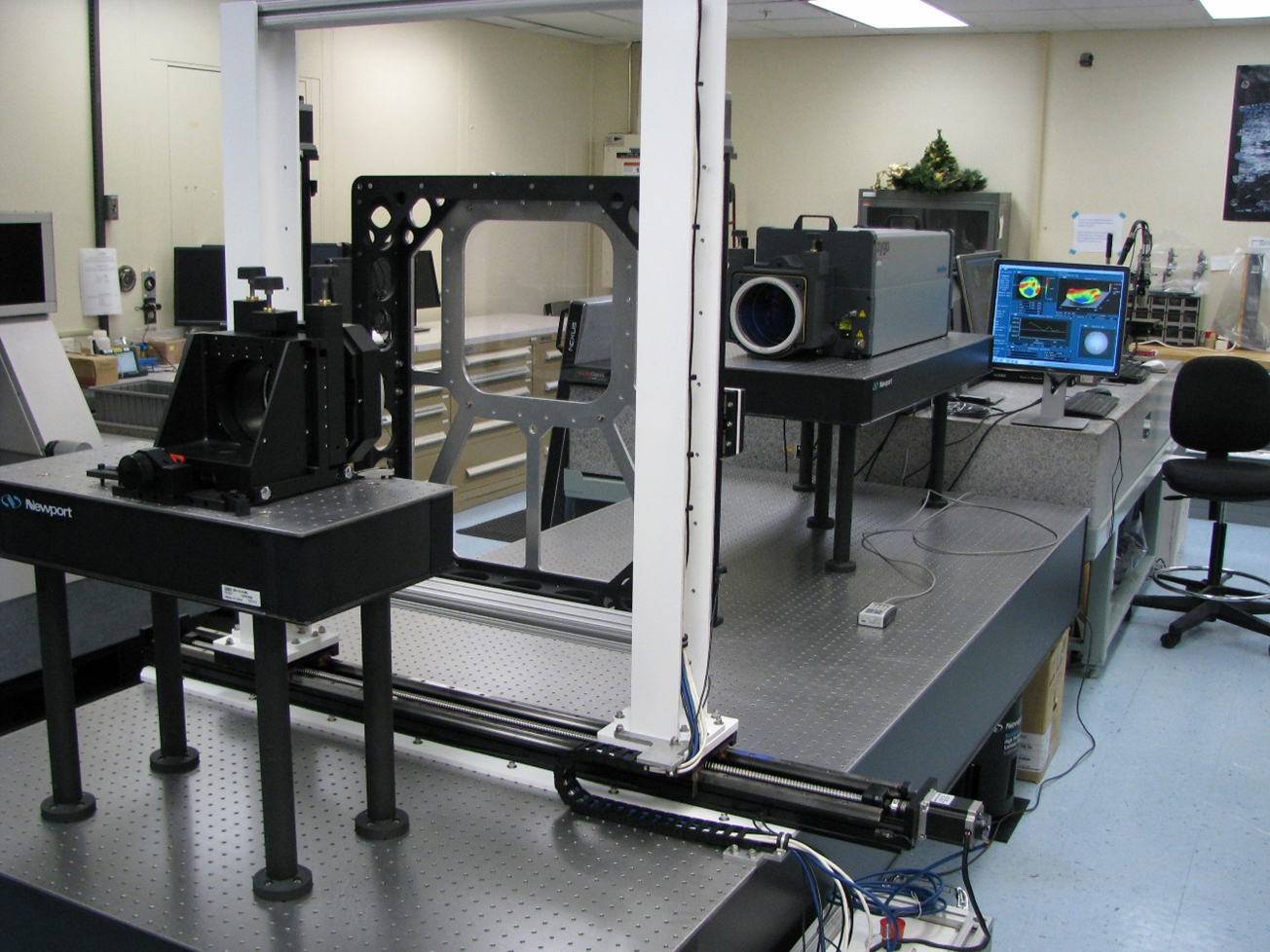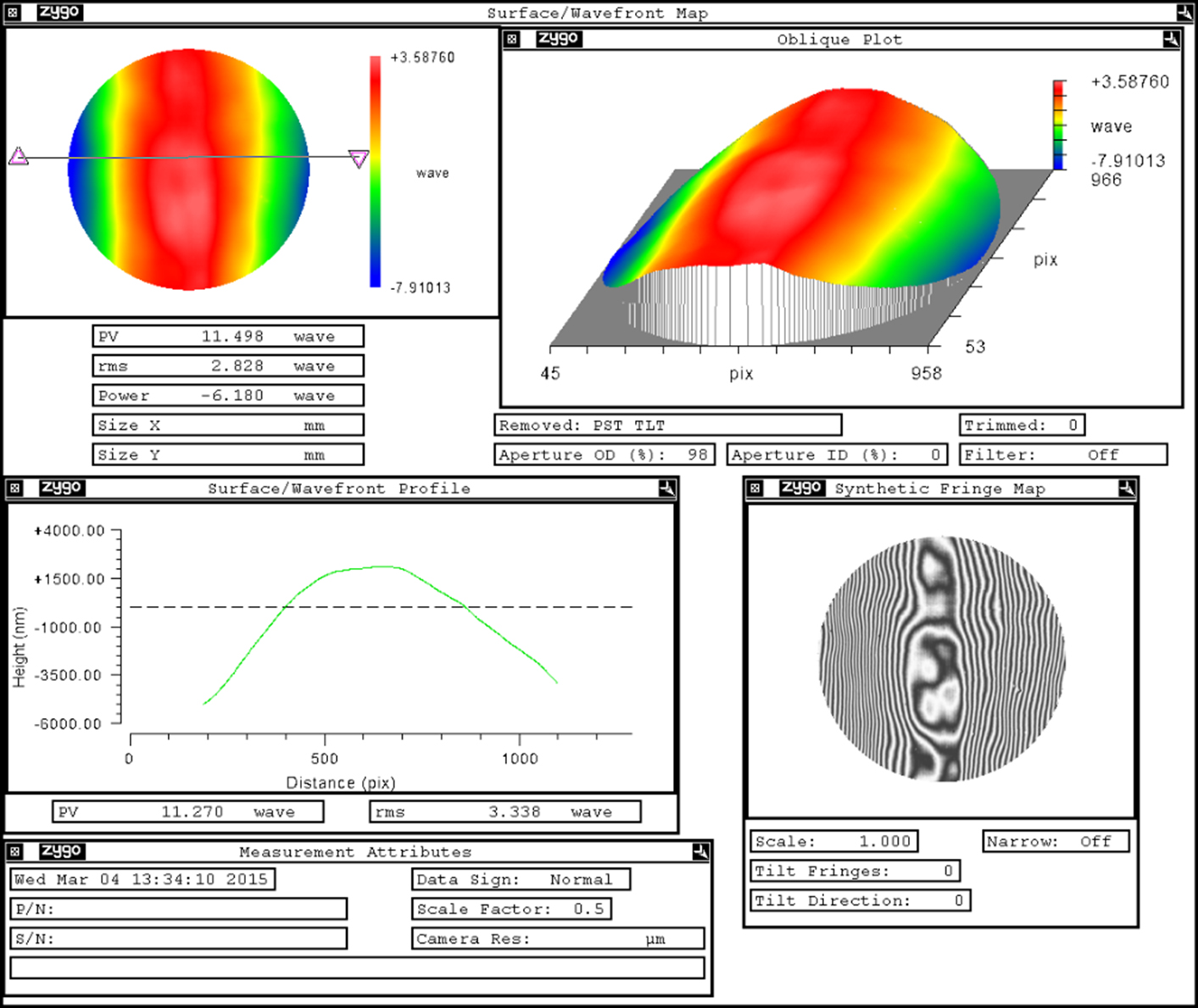In response to the revised requirement levied onto the Multi-Purpose Crew Vehicle (MPCV) Program to verify that uninstalled flight window assemblies have minimal wavefront variation, KSC’s Applied Physics Laboratory partnered with the NESC in the development of a wavefront measurement capability at KSC, in close proximity to the MPCV crew module assembly site. The measurement required the construction of an optical interferometer-based wavefront measurement system consisting of an off-the-shelf interferometer and a custom scanning system. Training, testing, analysis, and an engineering assessment were required to ensure adequate system operation and that the deliverables provided could allow certification of window assemblies.
The system utilizes a phase shifting interferometer to provide optical path length measurements through an individual window pane or through a fully stacked window assembly. Variations in the window’s optical path length lead to wavefront perturbations and can cause images seen through the window to be distorted. The revised NASA requirement on spacecraft windows sets maximum allowed values for the wavefront perturbation, but other organizations, such as the Department of Defense, place maximum allowable values on the window’s distortion, a window attribute that can be difficult to quantify using ASTM or ISO methodologies. One of the breakthroughs of this work was the realization that the distortion of a window is easily calculated from the optical path length of the window, allowing phase shifting interferometry to replace some of the older less precise distortion measurement approaches (see references).
After establishing the window wavefront measurement system for MPCV, the International Space Station (ISS) Program requested that it be used to help evaluate new scratch panes to cover the inside of windows on the ISS. The successful operation of the system in that evaluation has led to further ISS requests for window/ material evaluation, including a request to perform modulation transfer function (MTF) measurements. MTF evaluation is a common optical approach for determining the imaging resolution capability of an optical system. However, measuring the MTF of a window has previously required measuring the MTF of a camera system with and without the window and comparing the results. Using software already programmed into the phase shifting interferometer MTF measurements of just the window can be obtained from the optical path length data, greatly simplifying the measurement of this important parameter.
For more information, contact Robert Youngquist, Kennedy Space Center – robert.c.youngquist@nasa.gov




























